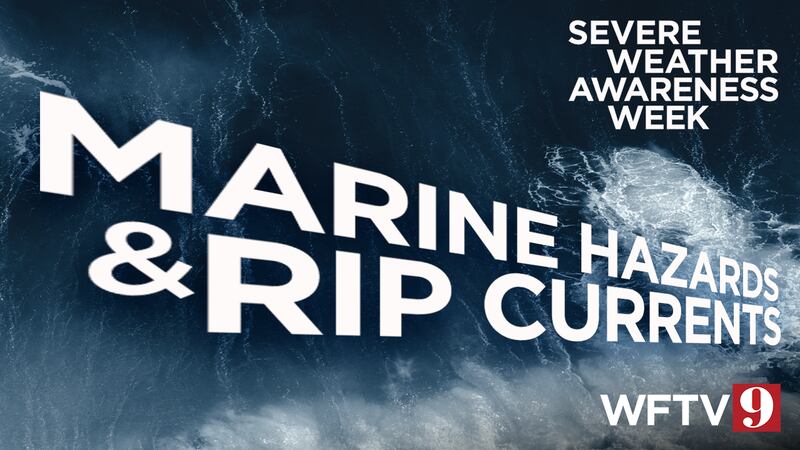ORLANDO, Fla. — Severe Weather Awareness Week in Florida is officially underway.
>>> STREAM CHANNEL 9 EYEWITNESS NEWS LIVE <<<
The week is observed each year by the National Weather Service and Florida Division of Emergency Management to increase awareness and preparedness for severe weather and related hazards.
READ: Severe Weather Awareness Week: 9 things to know about lightning
Each day focuses on a different weather event Florida experiences. Thursday is hurricanes and flooding.
Read 9 things to know below:
- Florida gets more hurricanes overall than any other state, and all of Florida’s counties have experienced a hurricane at one time or another since record-keeping began in 1850.
- Hurricane season begins June 1, but having weak systems form before then is not that uncommon. Also, early-season tropical systems like to form near Florida over the warm waters of the Gulf of Mexico and the Bahamas.
- Hurricanes are classified from Category 1 to 5 with winds ranging from a minimum of 74mph (Cat 1) to 157mph+ (Cat 5). According to NOAA, a Cat 5 hurricane can cause up to 250 times the damage of a Cat 1 storm of the same size.
READ: Severe Weather Awareness Week: 9 things to know about tornadoes in Florida
- Of the 5 most costly hurricanes to hit Florida, 3 of them (Irma 2017, Michael 2018, and Ian 2022) have occurred in the past 5 years with Ian likely the costliest Florida storm ever.
- El Nino and La Nina cycles in the Pacific can influence our Atlantic hurricane seasons. In general, El Nino cycles bring fewer storms with La Nina bringing more.
- There have been two times that we’ve run out of names for tropical systems and had to resort to the Greek alphabet to fill the void. After 2020′s record 30-named systems, and the ‘retiring’ of Greek letters ‘Eta’ and ‘Iota’, the Greek alphabet will no longer be used. A backup list of regular names will be used instead.
READ: Severe Weather Awareness Week: 9 things to know about rip currents
- Hurricanes and flooding often go hand in hand. Hurricane Ian dropped over 20 inches of rain in central Florida in 2022 resulting in weeks of flooding and extensive clean-up. NOAA reports that flooding is also the #2 cause of weather related fatalities around the U.S. second only to heat.
- When you think of hurricanes you probably think of high winds. But according to NOAA, it’s the water that’s responsible for 90% of fatalities and half of those are due to coastal storm surges. Storm surge is due to rising water along coast generated by strong winds from a tropical system nearby.
- The average Atlantic hurricane season consists of 14 named storms, 7 becoming hurricanes, and 3 becoming major hurricanes (Cat 3+). Most of this activity occurs from mid-August to mid-October.
READ: Chinese spy balloon: China’s military likely responsible; FBI examining debris
Click here to download the free WFTV news and weather apps, click here to download the WFTV Now app for your smart TV and click here to stream Channel 9 Eyewitness News live.
©2023 Cox Media Group






